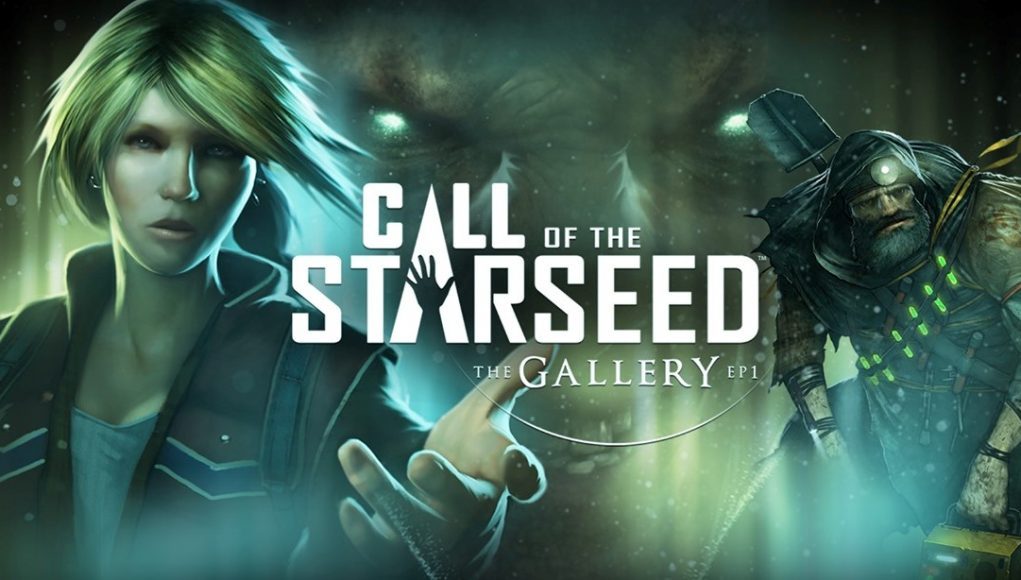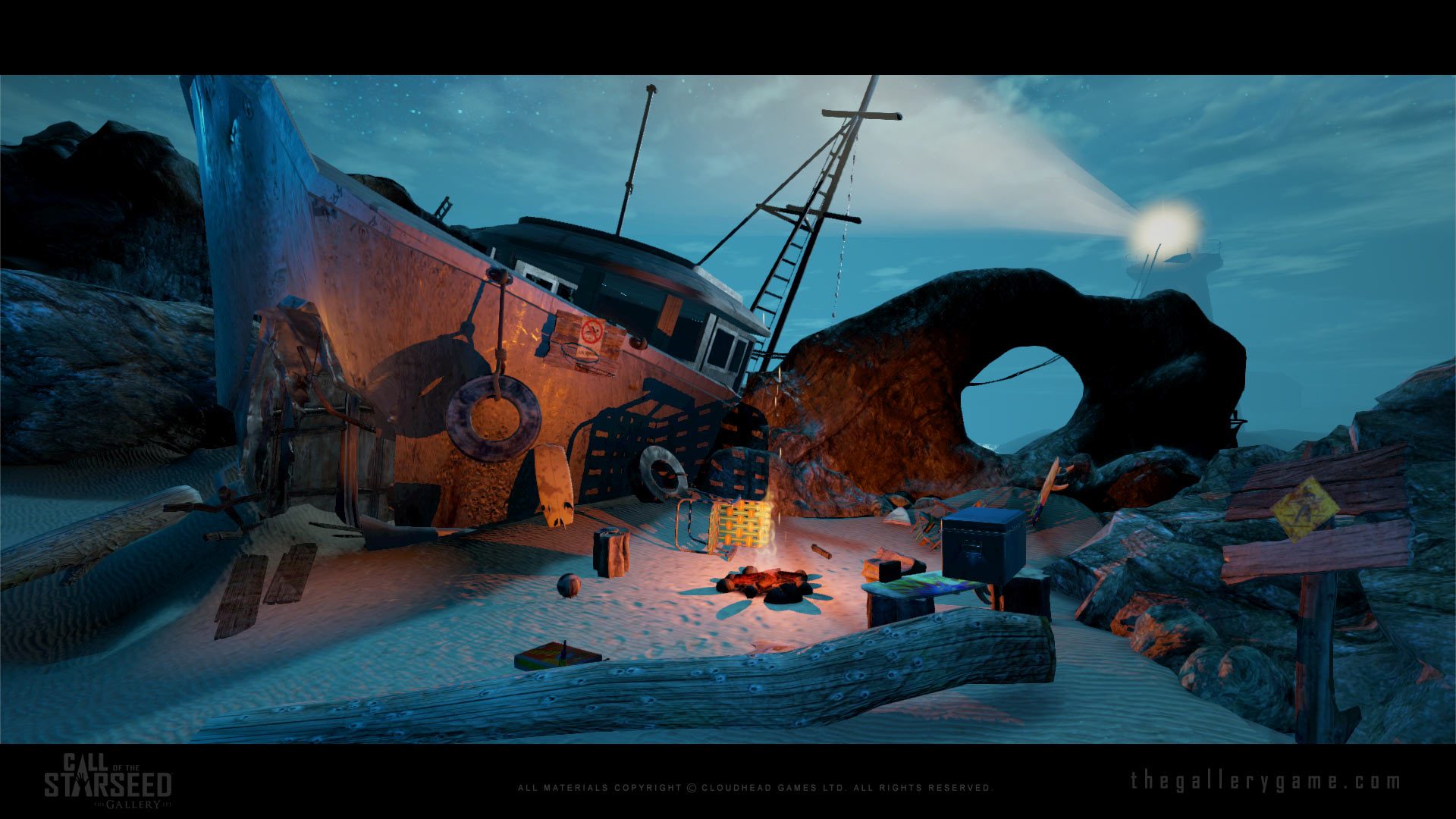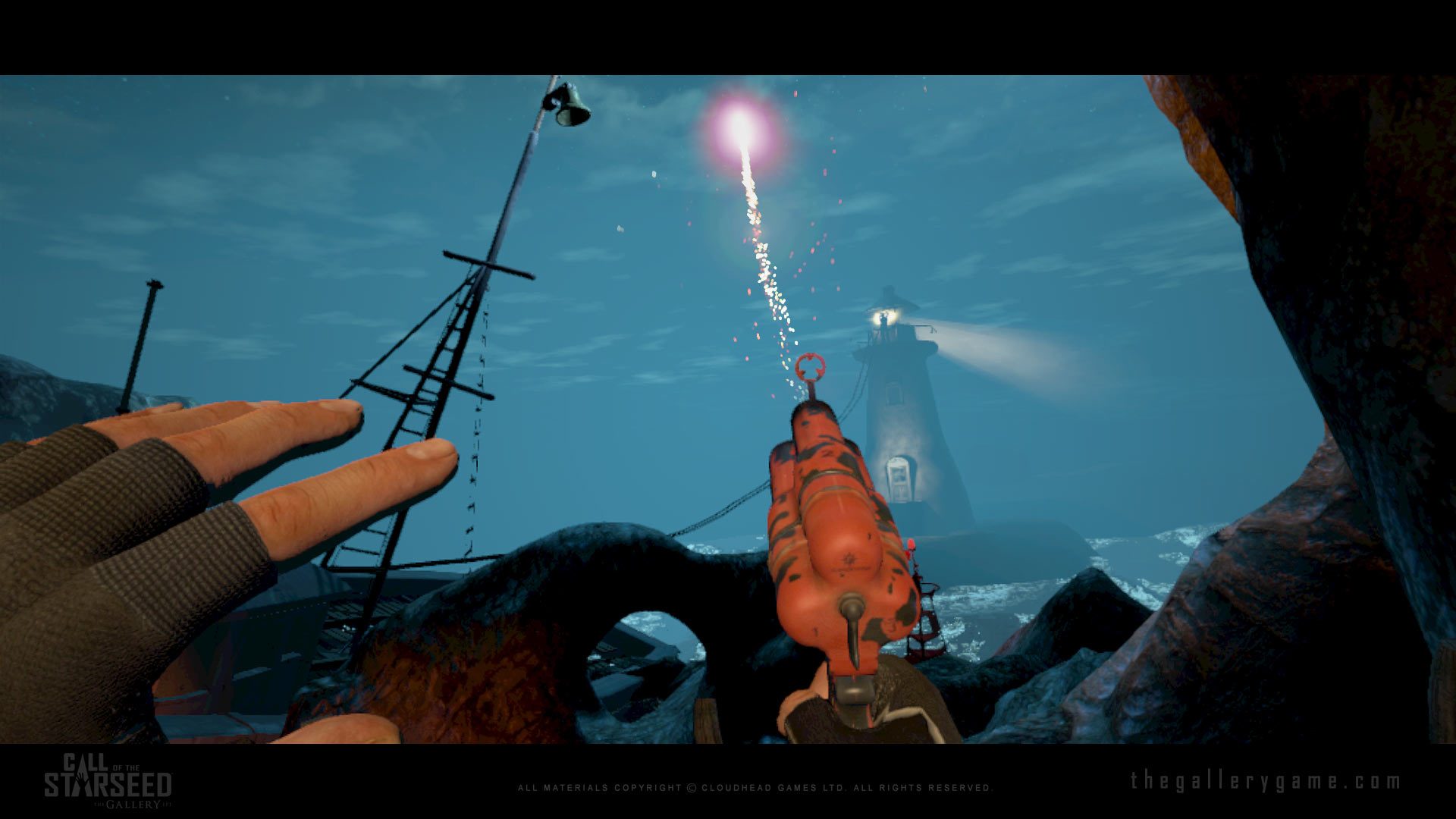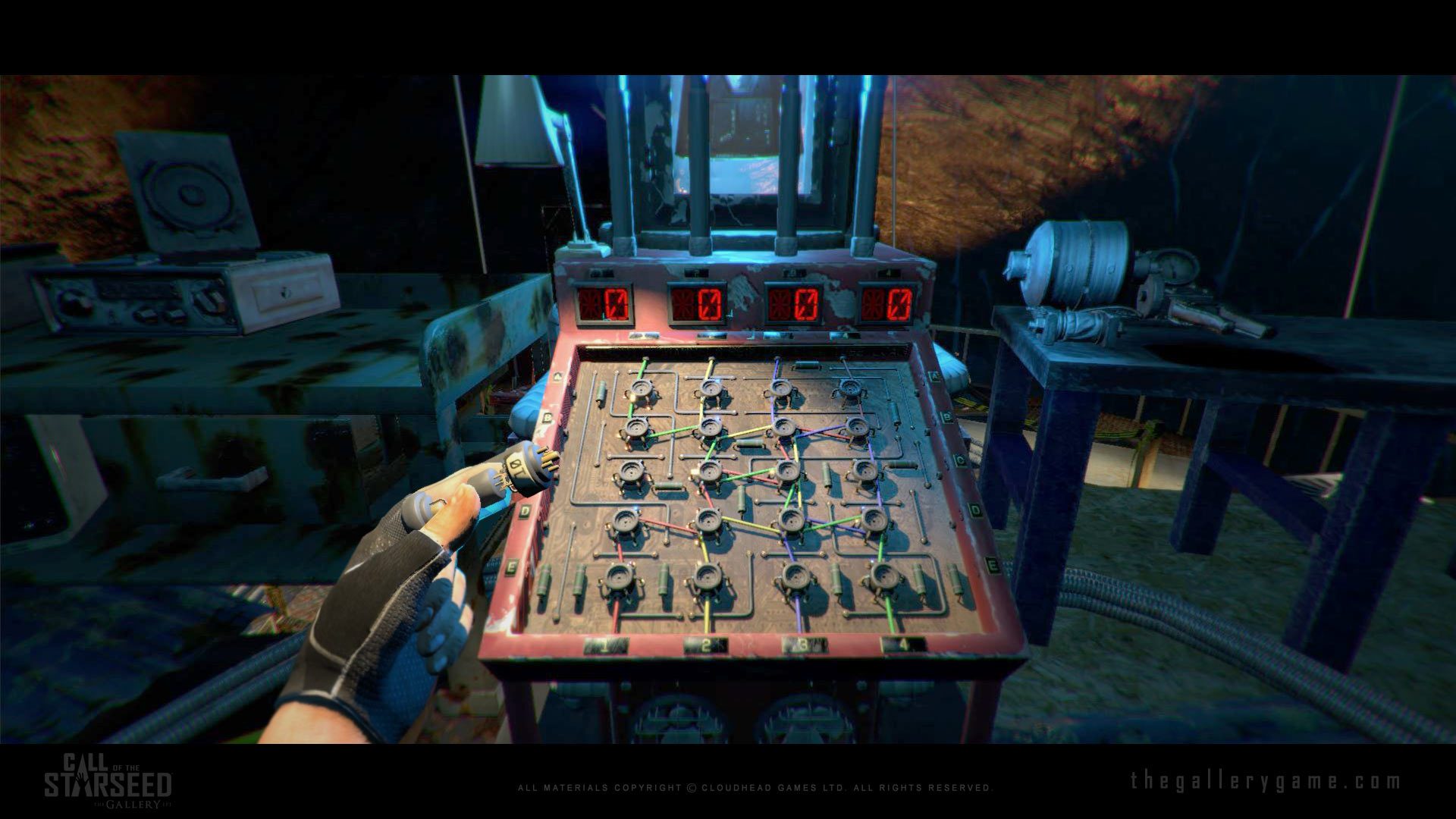The Gallery: Call of the Starseed (2016) is a first-person adventure from Cloudhead Games that’s unashamedly a ‘first’ in many categories. As a Vive launch title, it was one of the most cutting-edge adventure games of its time, and although it’s showing its age at this late review date, it remains an intriguing, well-realized cinematic experience that will leave you more than ready for the next episode. Since we didn’t have a chance to review it the first go around last year, we took a moment to go through in preparation for the sequel due this month, The Gallery: Heart of the Emberstone.
The Gallery: Call of the Starseed Details:
Developer: Cloudhead Games
Available On: Steam (HTC Vive, Oculus Rift), Oculus Store (Rift), Viveport (Vive, Rift)
Reviewed On: Oculus Rift
Release Date: April 5, 2016
Gameplay
Created with the love of ’80s fantasy films like The Dark Crystal (1982) and Labyrinth (1986), Call of the Starseed begins in the most patently ’80s way possible—you’re left a cassette tape from your twin sister, Elsie, beckoning you to meet her down by a deserted, windswept cove as she’s taken the liberty of running off on a wild adventure of her own; to what end, you’re not sure. Drawing you further with yet more tapes found along the way, you meet a sewer-dwelling, addle-brained professor who knows where Elsie’s gone, and sends you after her in what proves to be a mind-bending ride into the unknown. And what’s a Starseed? You’ll have to play to find out.
Like many adventure games, puzzles aren’t high on difficulty in Call of the Starseed, acting more as an interactive way of pushing the story forward. That said, the first puzzle you encounter doesn’t really make sense outside of the explanation of “Duh, it’s a game. Games aren’t supposed to be realistic,” which doesn’t really feel like a great start for something that should strive to create presence. If you can ignore it though, you’ll find the rest of the hour-long game much more thematically consistent.
Note the reader: This gripe has been marked for easy gripe-skipping. If you don’t wish to read this gripe, please jump down right before the ‘Immersion’ section for a less gripe-filled reading experience.
Gripe begins: Wandering along the beach, I pass by a seemingly important basket. Before I can inspect it though, the basket is automatically winched out of reach, almost as if the developers themselves are saying “nice try.” In fact, that’s exactly what’s written on the bottom.
Continuing forward, I walk into the professor’s cave hideout where I decipher a message written in Morse code that tells me to ‘shoot the bells’. Finding myself with the task of using a flare gun to shoot a number of bells to distract an inexplicably sentient lighthouse, I dutifully aim and take fire without the slightest idea why. Once you’ve shot the right bells and sufficiently distracted the lighthouse, the epic music swells, telling you you’ve done something magical and important. Did I? I wasn’t so sure. And I still feel like I’m missing something.
Clattering down to the beach, you return to the basket which you find lowered to reveal a door handle to the sewer where the old professor can be heard crowing away about the CIA or some such. Why was the basket lowered? Why did the old man keep an extra handle there? Why did he write “nice try” on it when any able-bodied person could hit the damn thing down with a bat? Maybe I should lighten up. After all, it’s just a game, right?
Gripe deescalates: While These things can’t go without saying, the first episode of The Gallery has to be viewed within context. As the first class of motion controller, room-scale games that allowed full object interaction, its job was much bigger than to just tell a logically consistent story with equally consistent puzzles. It had to teach us how to move through the world and pick things up; it created a unique inventory system, pioneered blink teleportation, and it did it all without tutorializing the player to death.
Despite my overblown gripe, Call of the Starseed could have suffered a much worse fate as one of the first built-for-VR adventure games for motion controllers, and while it’s hard for me to judge it with the same temerity that I would a modern game that’s necessarily had the benefit of learning from Call of the Starseed’s misgivings—i.e. short gameplay length and some less than perfect locomotion—the game is decisively a joy to play, offering something truly out of the ordinary, even with a year and half of games between its debut and now.
Immersion
Again, as one of the first games of its kind, there’s plenty of slack to be cut for Call of the Starseed when it comes to some of the more negative visual aspects. Both Oculus and Valve have done much to optimize VR’s graphical load on GPUs, not to mention NVIDIA and AMD have brought out new, more powerful GPUs in the meantime. That said, even on high settings, textures seem a little too basic for such a well-realized atmosphere, detracting from the game’s ingenious lighting and frankly awe-inspiring cinematics.
Object interaction isn’t nearly as fine as you’d see in later titles either, the exemplar being Lone Echo (2017) for its dynamic hand poses that allow you to grab items at any angle and grip them realistically. Holding items never quite feels ‘right’ in Call of the Starseed because you’re given only a few specific handholds for each item, giving a knock to immersion somewhat.
Story-wise though, Starseed nails the plucky ’80s fantasy vibe it was going after. Its cast of characters, although cartoonish, are undeniably real people. You can attribute this to a well cared for script, and top-notch voice acting that really make the world’s characters come alive.
Comfort
Cloudhead Games was one of the early developers of teleportation and snap-turn comfort mode, both of which are industry standards of locomotion. There’s a few different styles of teleportation, so you’ll have to experiment to find what’s right for you. Despite this, the locomotion scheme shows its age somewhat, as I often had trouble getting a lock on an appropriate place to teleport.
Smooth-turn junkies will find the settings menu critically lack their world-twisting yaw motion. Better luck next time, guys.
You can also force-grab items from a close enough distance, removing the labor of constantly bending down to pick things up. This was also a bit inconsistent though, the best example being fiddly puzzle that required you to grab battery cells floating in zero G. This puzzle took its toll on my patience as I practiced force-grabbing batteries rather than physically plucking them out of the air like I would naturally, simply because as soon as you tried to grasp a battery, it would invariably fly away in the opposite direction.
Frustrations aside, all of this makes Call of the Starseed an exceedingly comfortable experience for anyone, seated or standing. We’re hoping to see some seriously smooth second generation-level improvements in all of these departments when the sequel launches.
The Gallery: Heart of the Emberstone is almost here, so check back on launch day (TBA) for our full review.











